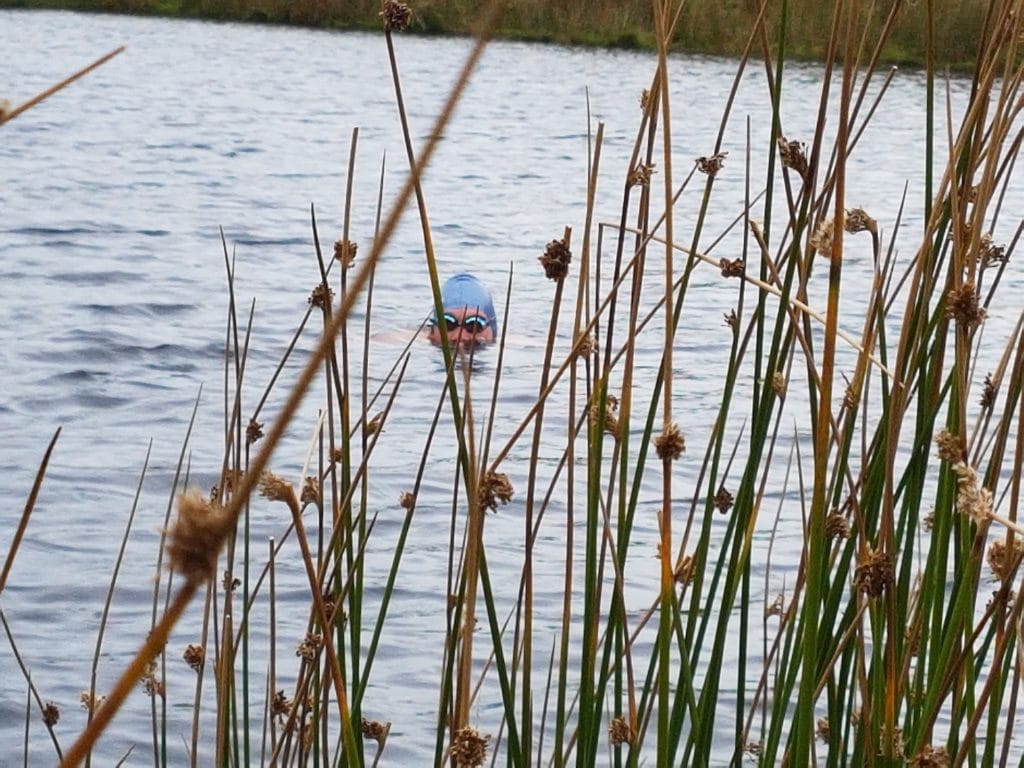Learning to get your face out to breathe.
A competent swimmer makes a smooth transition between water and air. It’s the most challenging part of learning to swim.
Being underwater is the place to be, to relax and develop feel for water. This is why people love snorkeling. It gives access to another world, without the worry of coming up to breathe. But to be safe and competent, and to benefit fully from the experience of being underwater, we have to be able to come up for air.
Inhalation always works best after relaxation and exhalation under the surface so you need to be really happy with this first.
It’s helpful if coming out to breathe isn’t learnt as part of a formal stroke, because there’s too much to think about then. It’s easier if you spend most of your time relaxing underwater, by doing a few strokes of anything you like, to settle into your own rhythm. Sweeping your arms back to your hips gives you some nice forward momentum and is probably the most natural swimming movement.
From this peaceful underwater place, ‘looking around at the fish’, move your hands in front of you and look forward under the surface. Then try to get your eyes above the surface, still making bubbles, and swim along looking at the horizon. Get used to swimming in this ‘half face out’ place, sculling with your hands out in front.
When familiar with this position, you can start to work on getting your face out to breathe. But instead of rushing an in-breath, see if you can swim with your face at the surface for a few strokes. Let your mouth and nose go under and pop up two or three times, to prevent an ‘all or nothing’ experience of getting air. If you’re not ready to swim with your face out, keep practising ‘eyes out only’ swimming, to get the feel of a forward-looking position without pressure to get air in.
Here’s how to manage the transition between water and air:
Make bubbles under the surface with your mouth open and keep doing this as you break the surface. Never close your mouth to try to stop water coming in. Let your mouth be half full of water all the time. If you make a noise (ahhh), you can hear the sound change as you break the surface. This tells you it’s time to stop letting air out. Think of letting some water into your mouth then some air will come in as well. Air comes in naturally, by itself, as a consequence of you breathing out into the atmosphere.
See the above video of ‘ex non swimmer’, Connor. Notice he’s keeping his mouth open, and not rushing an in-breath.
Remember:
- Keep your mouth open.
- Let water into your mouth.
- Let the air come in on its own instead of trying to take a breath.
- Keep your hands moving in front.
- Swim at the surface for two or three strokes, in and out of the water, before resting your head face down underwater again.


